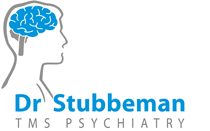
Transcranial Brain Stimulation to Promote Functional Recovery After Stroke
Estelle Raffin; Hartwig R. Siebner | 2014
Copyright © 2015 by WebMD LLC. All rights reserved.
Abstract and Introduction
Abstract
Purpose of review: Noninvasive brain stimulation (NIBS) is increasingly used to enhance the recovery of function after stroke. The purpose of this review is to highlight and discuss some unresolved questions that need to be addressed to better understand and exploit the potential of NIBS as a therapeutic tool.
Recent findings: Recent meta-analyses showed that the treatment effects of NIBS in patients with stroke are rather inconsistent across studies and the evidence for therapeutic efficacy is still uncertain. This raises the question of how NIBS can be developed further to improve its therapeutic efficacy.
Summary: This review addressed six questions: How does NIBS facilitate the recovery of function after stroke? Which brain regions should be targeted by NIBS? Is there a particularly effective NIBS modality that should be used? Does the location of the stroke influence the therapeutic response? How often should NIBS be repeated? Is the functional state of the brain during or before NIBS relevant to therapeutic efficacy of NIBS? We argue that these questions need to be tackled to obtain sufficient mechanistic understanding of how NIBS facilitates the recovery of function. This knowledge will be critical to fully unfold the therapeutic effects of NIBS and will pave the way towards adaptive NIBS protocols, in which NIBS is tailored to the individual patient.
Introduction
Together with basic research in animal models, functional neuroimaging techniques have significantly advanced the understanding of neuroplastic changes following stroke. The therapeutic use of noninvasive brain stimulation (NIBS) is a prominent example for an interventional procedure that has been motivated by basic research on stroke recovery. Repetitive transcranial magnetic stimulation (rTMS) and transcranial direct current stimulation (tDCS) are the two NIBS techniques that have been predominantly tested in stroke patients. Promising results have been reported with both stimulation modalities,[1,2] but many questions still remain to be answered. In this review, we raise some open questions regarding the therapeutic application of NIBS in poststroke patients. We focus on the use of NIBS to facilitate motor recovery, but we will also touch on the treatment of aphasia or neglect.
